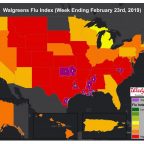Best Practices for Safe Pet Air Travel
While more than two million animals fly on airplanes every year in the United States, it’s not uncommon for pet owners to feel anxious about sending their precious furry friends through the friendly skies. PuppySpot.com, the trusted service connecting dog lovers with responsible breeders nationwide and one of the leading pet travel coordinators in the country, has released a step-by-step guide for safe pet air travel to help pet owners navigate the process.
- Make Sure Your Dog is Healthy Enough to Fly
A dog with known health issues or of senior age is more likely to respond negatively to the stresses of flying. In fact, most airlines require a health certificate within 10 days of departure and have age limitations on flying pets. Not only is a health check often required, but it’s wise as a responsible pet owner to get your dog examined by a licensed veterinarian and ensure she is current on all vaccinations prior to travel. - Get Your Pup Accustomed to A Crate
Every pup that goes on an airplane (whether as carry-on or cargo) is required to be contained within an appropriately-sized travel kennel. For that reason, it’s important to acclimate your dog to the crate well in advance of her trip. Purchase the kennel as far in advance of your trip as possible and follow the rules of crate training to get your pup comfortable with the crate. Also, be sure to pay attention to your airline’s specific rules for kennels, as each varies slightly. Leading pet travel airlines – like United and Delta – have pages dedicated to kennel guidelines. - Be Aware of Airline Restrictions
Major airlines have strict weather restrictions when it comes to flying pets, as animals can be extra-sensitive to extreme heat or cold. Some airlines also have specific breed restrictions. To avoid any surprises, check with your preferred airline prior to travel to ensure your dog is permitted to fly. - The Early Pooch Gets the Treat
You know the old standard of arriving at the airport two hours ahead of your flight to leave enough time for security, checking baggage, etc.? Well the same, if not more of a conservative estimate applies to doggie travel. Give you and your pup plenty of time to get situated and address any issues with TSA well ahead of departure. - Feed and Exercise Appropriately Prior to Travel
Experts advise feeding your dog approximately 4-6 hours prior to flight time so she has enough time to digest properly and is full enough for the duration of the flight. However, feeding too much and too close to the flight could cause an upset stomach while in-flight. That said, you should continue to keep your dog well-hydrated and provide water right up until the time of travel. Just be sure to empty the dish before checking the dog. A full water bowl will spill or cause unnecessary messes during flight. Before heading to the airport, be sure to exercise your dog with a long walk and allow her ample time to relieve herself before takeoff. Plenty of exercise will afford your dog the opportunity to burn off excess energy and therefore, rest easier during the flight. - Do Not Sedate Your Pup Under Any Circumstance
Under no circumstance is it advised to sedate or tranquilize your pup for air travel. In fact, the American Veterinary Medical Association (AVMA) states that sedating pets for air travel can be fatal. Sedation is the #1 cause of animal incidents during travel, as many animals react negatively/abnormally to sedation. Also, not much is known about the side effects of sedatives combined with high altitude and/or higher stress levels. - Consider Airline Pet-Specific Measures and Offerings
All major, reputable airlines offer additional measures to give extra peace of mind when transporting pets. For example, United’s PetSafe Program provides the ability to track your pets from origin to destination, and both United and Delta‘s Variation Live Program offer temperature-controlled vans and holding areas as well as specially trained ground handlers for personalized care on the go. - “PuppySpot’s Travel Agents work closely with our breeders and airline partners to send puppies home healthy and safe,” says Greg Liberman, Chief Executive Officer of PuppySpot. “We hope that sharing some of our guidelines will help pet owners feel comfortable and confident flying their pets and we are always here to provide support and guidance to any member of the PuppySpot community.”
“I had a great experience with PuppySpot from beginning to end,” said Christine B. of Massachusetts who left a PuppySpot review after welcoming home her King Charles Cavalier. “The agent I spoke with was very helpful and informative throughout the whole process. The travel department always kept me up to date.”






